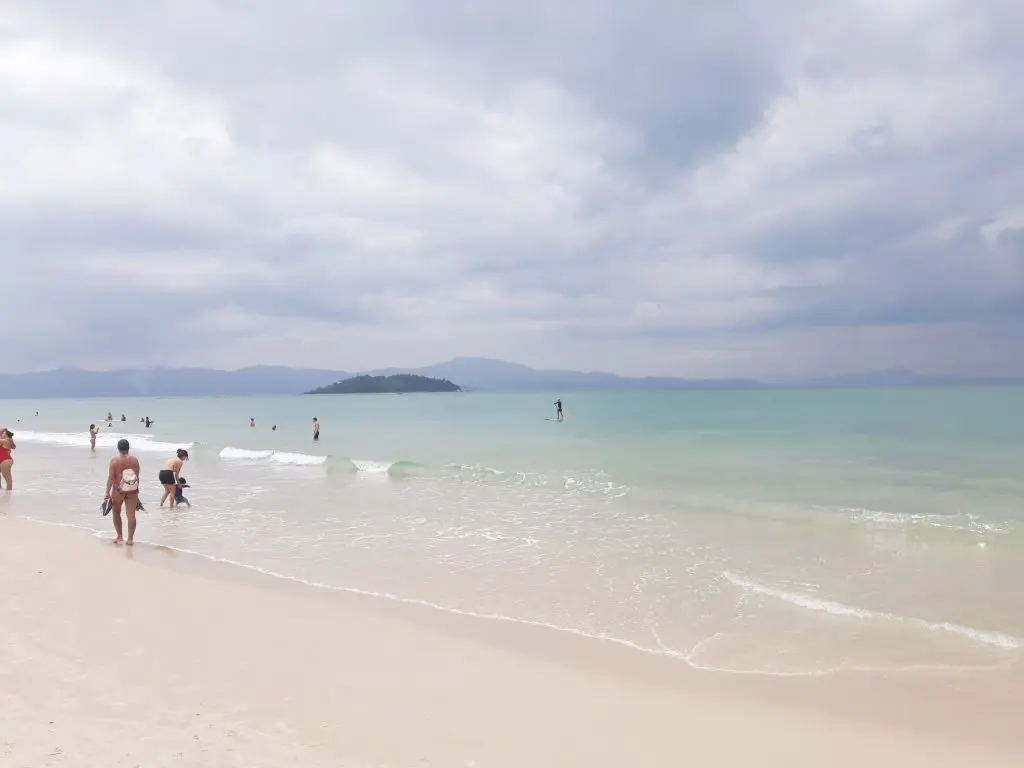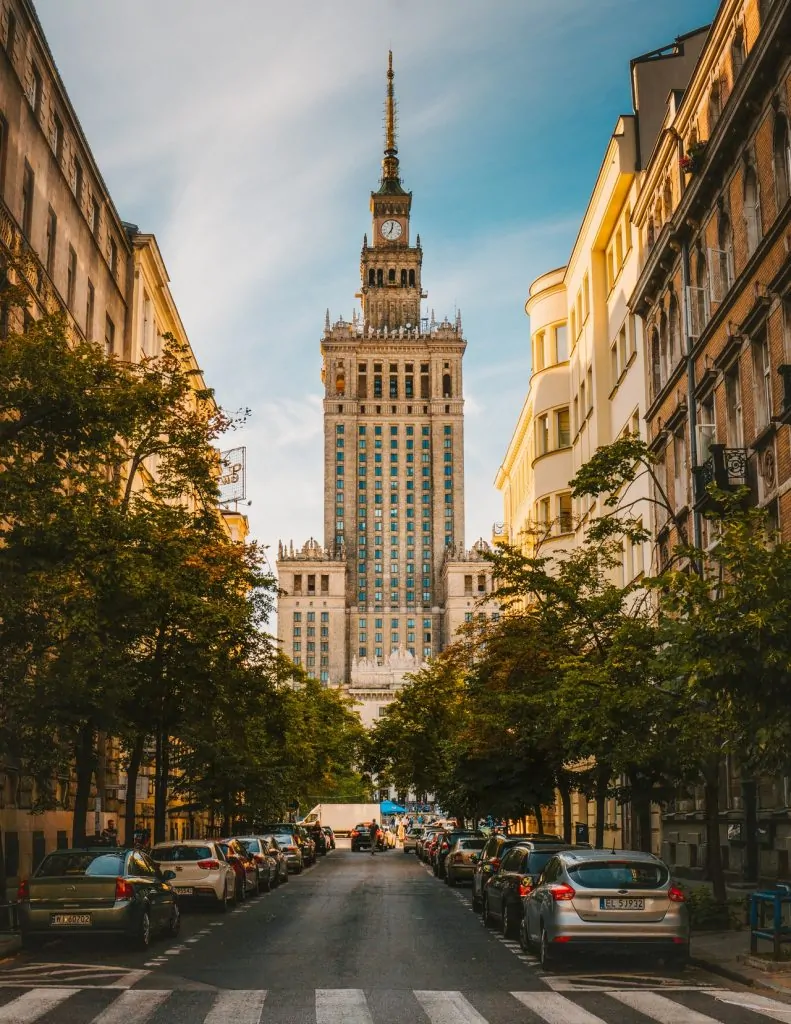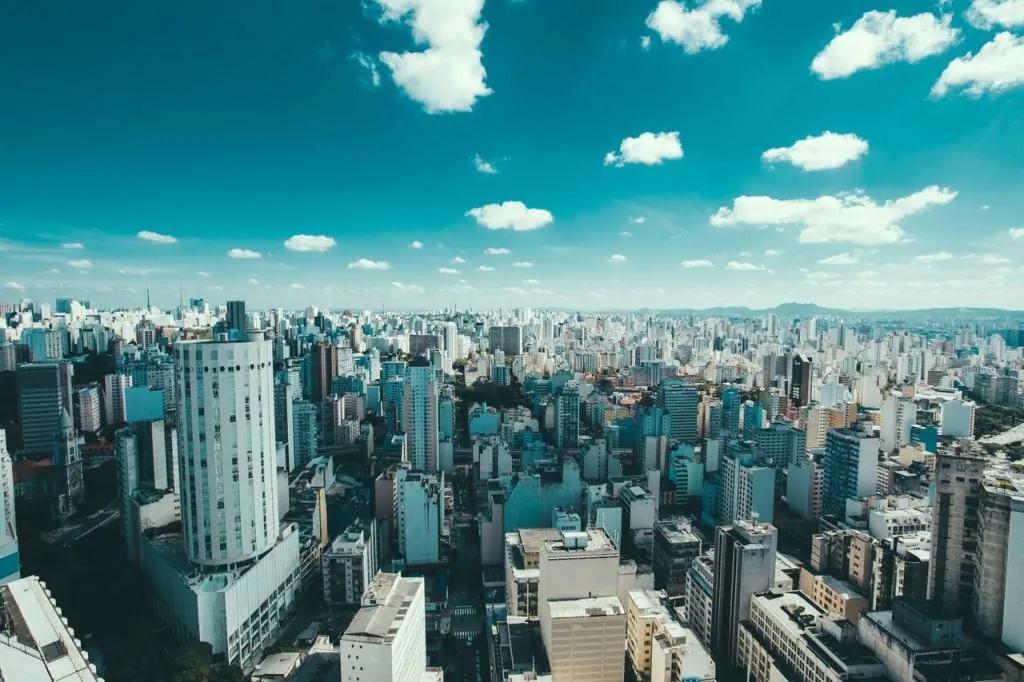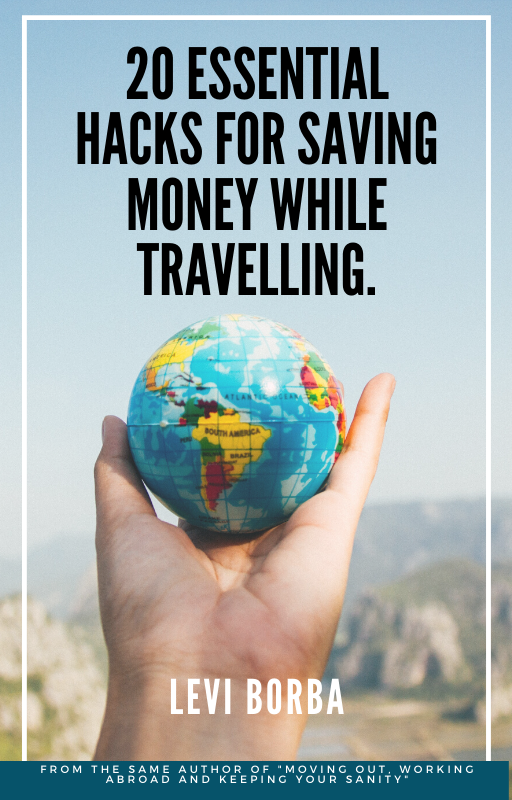“You will spend at least US$3000 per month if you plan to live and retire abroad.”
That’s what many expat advisors will tell you.
But after personally spending time in these 3 countries on 2 different continents, I discovered that..
They are completely wrong – if you know where to look.
I’ve walked the streets, paid the bills, and done the math.
On just $1000 monthly, you can afford a comfortable apartment, eat at local restaurants at weekends, access quality healthcare, and still have funds for leisure.
I am NOT talking about Southeast Asia, but about 3 countries in Europe and Latin America.
But before we dive into these 3 affordable countries, let me ask you a personal question:
What would you do with an extra $2,000 each month?
- Would you travel more?
- Pursue a hobby?
- Actually enjoy retirement instead of stressing about money?
Because that’s the typical savings in these 3 countries compared to living costs in the US or Western Europe. This financial advantage makes them attractive destinations for those looking to stretch their retirement savings. In fact, many advisory websites list these places among the cheapest countries for retirees, highlighting their affordability without sacrificing quality of life. Consequently, retirees can enjoy a comfortable lifestyle, access to healthcare, and vibrant cultures while benefiting from significant cost savings.
And honestly, countries like Portugal or Spain are becoming too expensive.
These popular retirement destinations simply aren’t affordable anymore.
But there’s hope in unexpected places.
Ready to discover their names? We start with…
3 Countries To Live on $1000 a Month
Argentina – NOT Buenos Aires
PS: I wrote a full article about the best places to live in Argentina here.
Our journey begins with Argentina. It’s important to understand that this country was not always a cheap place to live. In fact, going back to the time of my grandparents, it was one of the richest in the world. It was even wealthier than many European nations, and consequently, very expensive.
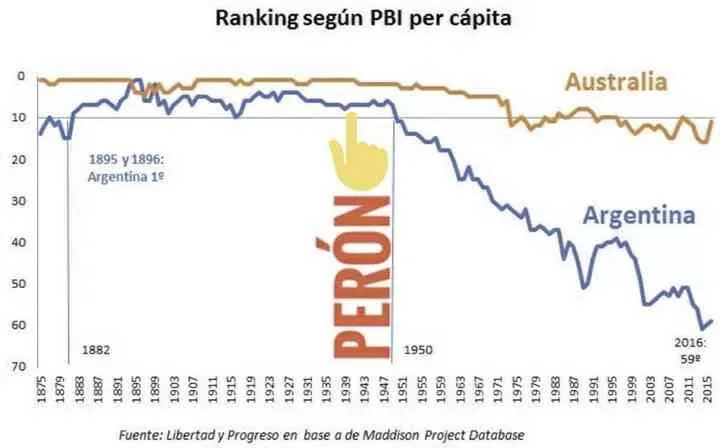
But, as history shows, things changed.
More lately, Argentina’s currency, the peso, has experienced a truly dramatic fall. The numbers are staggering. In the last year alone, the Argentine peso devaluated by 32.4% against the US dollar and 25.8% against the euro.

Things become even more impressive, perhaps shockingly so, when we look beyond just the last year. We must consider the last two years. To illustrate, in January 2023, one US dollar bought 177 Argentine pesos. Fast forward to December 2024, and that same one US dollar could buy 1,074 pesos.

That’s six times more. This highlights the incredible speed of devaluation.
The Argentine economy’s struggle is nothing new. For many years, people who earn their income in hard currency – meaning stable currencies like dollars, Swiss Francs, euros, British pounds, etc. – have known that Argentina is a very inexpensive place.
This affordability was actually one of the reasons I chose there as a destination for my honeymoon.
What makes Argentina unique among the countries with severe currency problems? It stands out because it’s not a violent place like Venezuela. Nor does it have collapsing public services like South Africa.
No, quite the contrary. In fact, despite all the crisis, Argentina remains the second most developed country in South America, trailing only Chile. Furthermore, it boasts a culture that many find easier to adapt to.
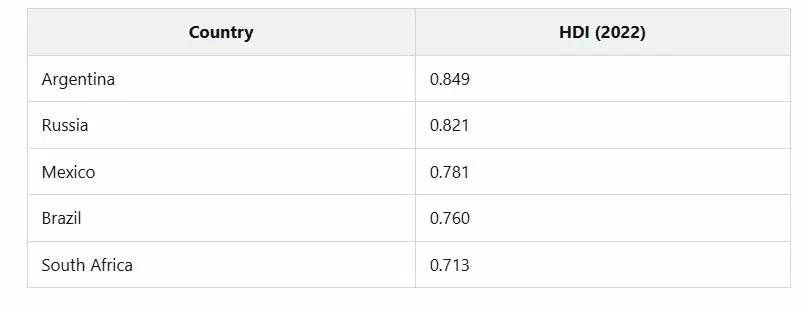
As a Brazilian, it might be weird for me to say that. But I found that Argentinians are some of the nicest people I’ve ever met in my life. They remind me of this friendly uncle who is always ready to grill a nice barbecue and shows a tremendous interest in talking to you, perhaps even though he forgot your name.
Beyond the welcoming culture, Argentina is also a remarkably safe country when you compare it to other Latin American nations.
And, most importantly for our discussion, Argentina is very affordable.
However, there’s a crucial point of attention here. I must be very clear. When I talk about affordable Argentina, I’m not talking about Buenos Aires.
The Argentinian capital is expensive. And let’s apply some common sense: if you want to retire or work remotely, why choose a city with 30 million people? Why deal with constant traffic, pollution, and many other big city problems?
Instead, I want to talk to you about a city located 1,000 kilometers from Buenos Aires. Before you picture isolation, don’t worry; it’s not a small town in the middle of nowhere. It’s actually a metropolitan area with 1 million people.

This city offers all the infrastructure you need, which includes good hospitals and an international airport. At the same time, this city is located in one of the most splendid parts of South America.
Welcome to Mendoza. This city is the heart of what we can rightly call the Napa Valley of Argentina. It’s a renowned winery region, famous for its Malbec wines.
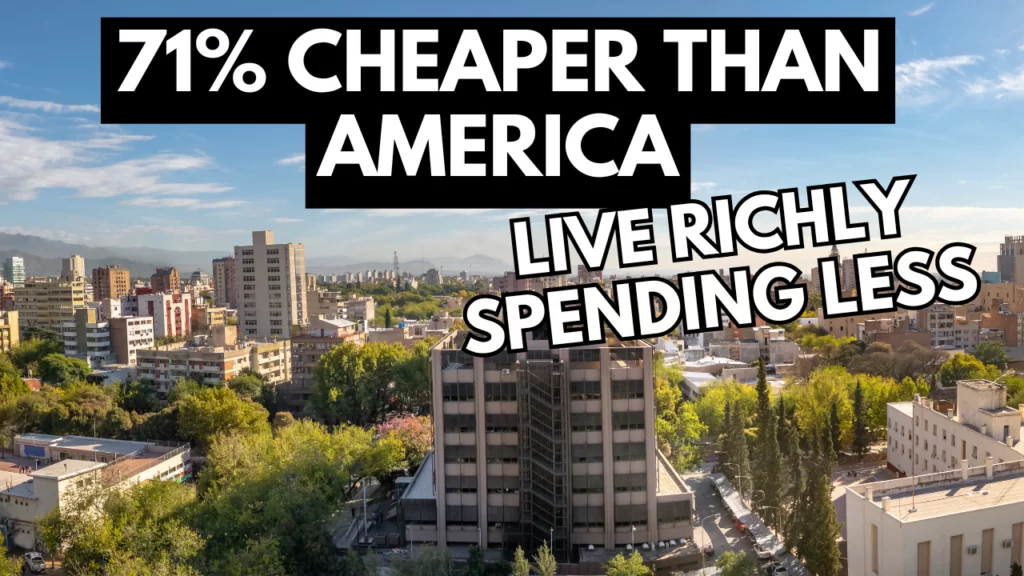
Beyond the vineyards, Mendoza offers pleasant weather, positive safety indicators, stunning mountains, and even ski resorts. Despite possessing all these great characteristics, it remains incredibly affordable. Data shows it is still 61% cheaper than San Diego in California.
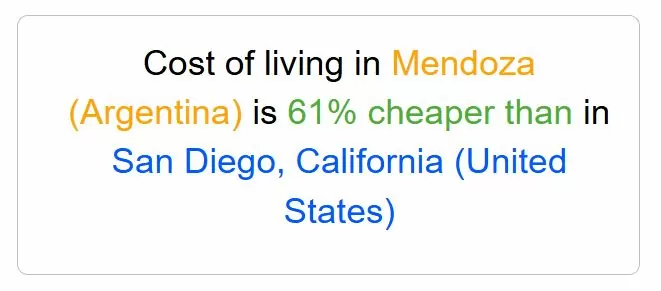
In many ways, Mendoza does not look like a large and noisy metropolitan area of one million people. One key factor contributing to this feeling is the affordable costs, particularly in housing. You can expect to rent a nice one-bedroom apartment for $350 to $450 monthly.
Utilities, covering basics like electricity, water, and gas, will likely cost about $70 to $100 per month. This figure often includes internet access. Food stays reasonably priced, with a monthly budget of $150 to $300 being feasible for groceries and some dining out. Public transit is very cheap, costing just $20 to $30 per month.
But the value extends far beyond housing. Even while the economy struggles, you will generally still find decent roads, reliable utilities, and exceptional internet connectivity in major Argentinian cities like Mendoza.
Now, let’s talk about healthcare. Argentina’s system has three levels: public, social security, and private. The public sector offers free universal care in government hospitals. However, potential users should be aware that there are some issues with waiting times.
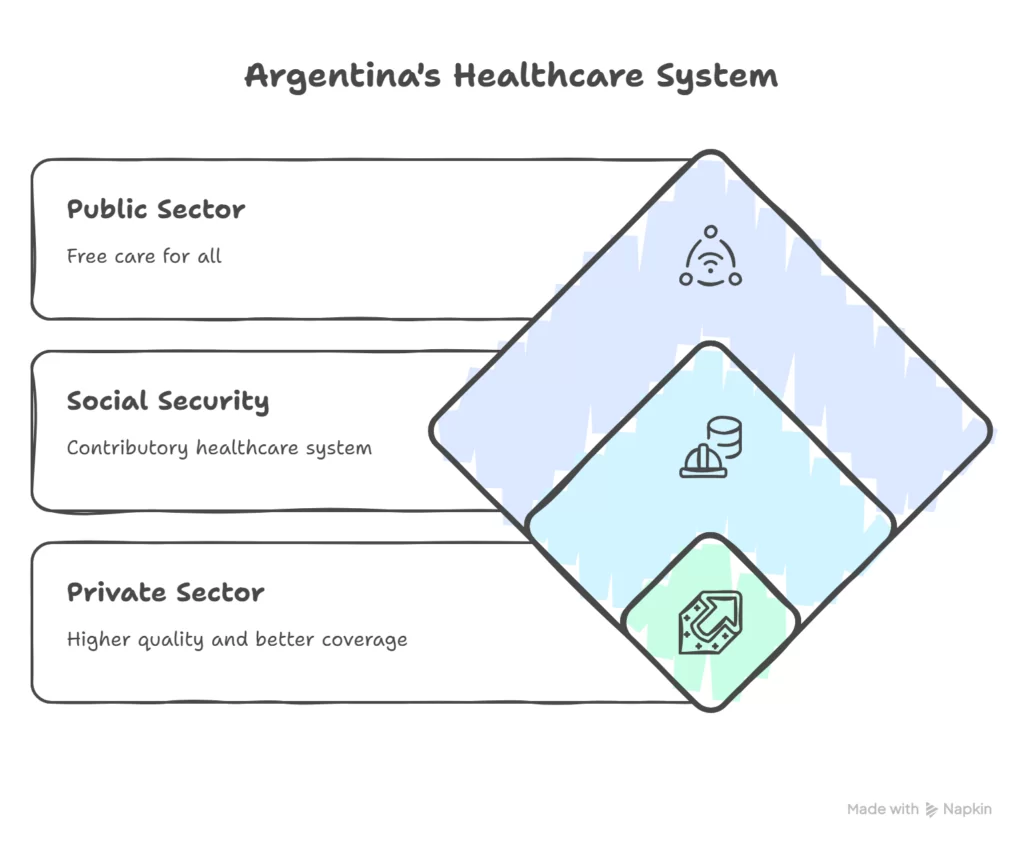
On the other hand, the private sector has a much better quality. It is also significantly way cheaper than in the US. Basic health insurance might start around $60 monthly for younger people. But this cost increases substantially with age and the level of better coverage desired.
One significant comfort for English speakers is that Mendoza has plenty of English-speaking medical professionals. This is especially true within the private healthcare sector. This is partially because the National University of Cuyo is located there, featuring an internationally connected medical faculty.
Having said that, I think it’s extremely important to learn Spanish if you move to Argentina. Your daily interactions with the locals will be so much better. But don’t worry, there is a funnier and nicer way to learn Spanish. The method I use to learn new languages is this one (by using this link you get a 40% discount after trying for free, and if you subscribe, you’ll get a 40% discount!)
There is something you need to know about renting in Mendoza.
Finding long-term housing contracts can be tricky for foreigners. Standard rental agreements typically run for three years, which might not work for everyone’s plans.
Consequently, many expats end up using Airbnb as a flexible alternative. Although this can affect your monthly budget calculations, often making housing more expensive than a long-term lease.
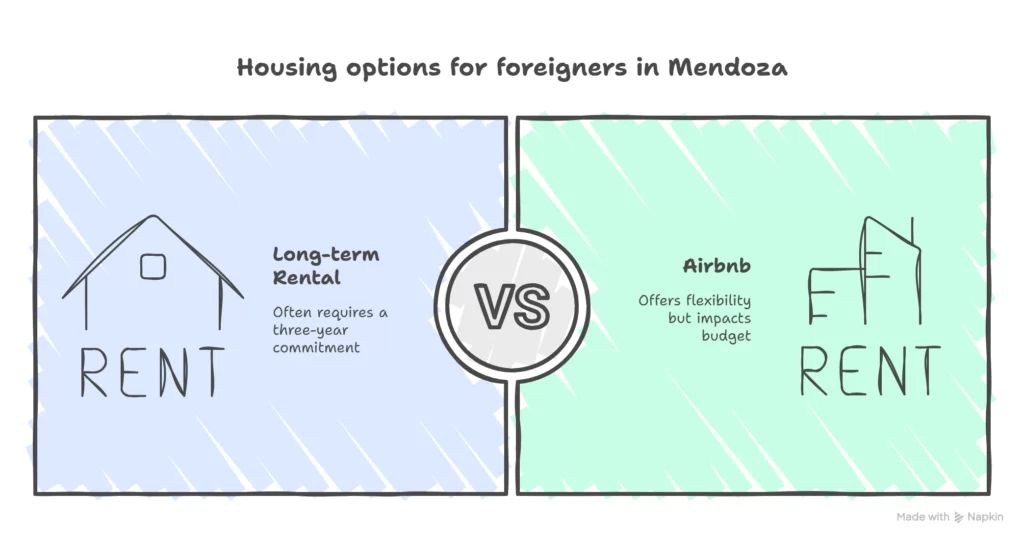
If you are serious about staying in Argentina long term, you will want to look into the Rentista visa.
This is the main pathway for people with passive income to establish residency. What’s the catch? You need to prove you have a stable, regular income from outside Argentina. Think about income from rental properties, dividends, or pensions.
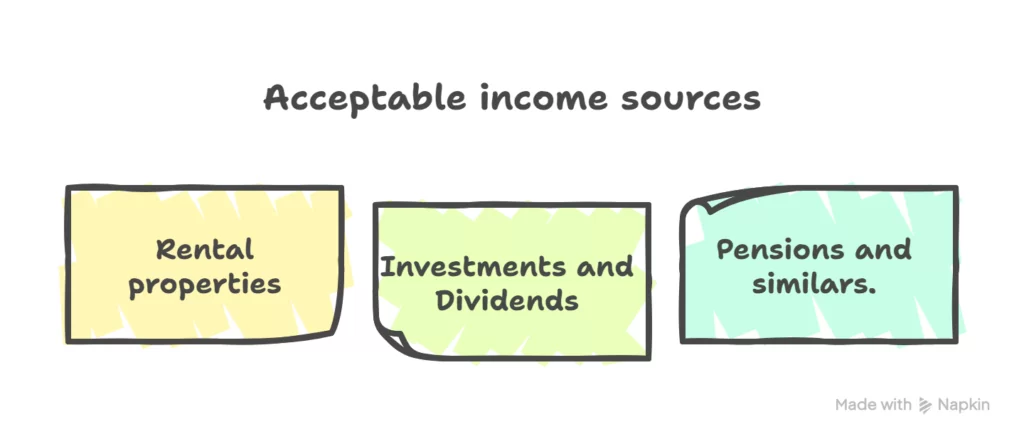
The required amount is around $2,000 (as of early 2025 estimates). Now, that threshold might seem high if your target budget is close to $1,000. But it’s crucial to remember this is for the visa application.
Your actual living costs, as we’ve discussed, will still fit within your lower budget.
So, when you add everything up – housing, utilities, food, transportation, healthcare – you can see that it’s possible to maintain a good life for around $1,072 in Mendoza. Living there means you’ll be surrounded by world-class wineries, incredible mountain views, and a pace of life that many find refreshing. This is especially true after years spent in high-stress environments.
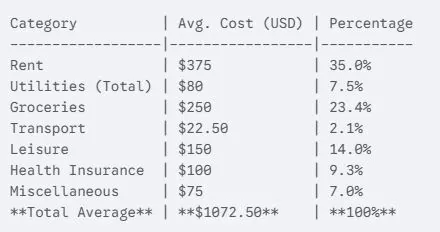
FREE FOR A LIMITED TIME: Grab your Expat Wealth & Lifestyle Compass ($108 value) today! Includes our 74-page guide of Affordable European Cities, our Zero-Tax countries report, and our expat checklist. https://bit.ly/ExpatWealthLifestyleCompass Join us here before this offer ends.

Bulgaria: European Living on a Budget – The Black Sea Coast
Our next country takes us across the Atlantic. After exploring Mendoza’s relaxed lifestyle, let’s shift our focus from mountains to coastlines. Welcome to Bulgaria.
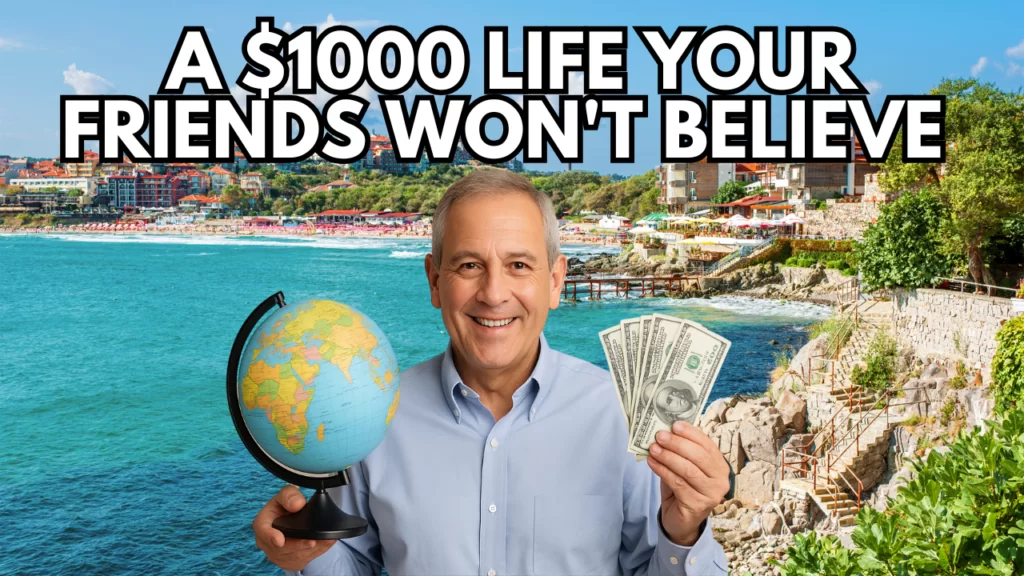
Specifically, Bulgaria’s Black Sea cities offer something that seems almost impossible. They provide the benefits of European Union membership at prices that rival Southeast Asia. Add to this fine beaches with surprisingly good infrastructure nearby, and you have a compelling package.
The coastal cities of Burgas and Varna aren’t just affordable. They are actually among Europe’s best-kept budget secrets. Indeed, a 2024 report ranked Burgas as the second cheapest major city in Europe for rent, with Varna coming in at 5th place. Bulgaria is also one of the places where you can buy a home for less than US$100,000.
When I traveled across Bulgaria, I couldn’t believe the value for money available.
Let’s look at what your housing budget gets you there. For approximately €250 to €350 per month (roughly $270-$380 USD, depending on exchange rates), you can rent a one-bedroom apartment in Sarafovo. Sarafovo is a beautiful beach town just 20 minutes from Burgas.

The most recent data from April 2025 shows average rents at about $304 in Burgas and $347 in Varna. This is nearly half what you would pay in most popular Western European beach destinations.
Utilities in these Black Sea cities are equally gentle on your budget. Expect basic services, which include electricity, heating, cooling, water, and garbage for an 85 square meter apartment, to average around $86 in Burgas and $123 in Varna. (I’m talking about equivalent values because, of course, they don’t use the dollar as a currency; Bulgaria uses the Lev).
What really surprised me was the internet costs. You can get high-speed connections that run just $13 to $15 monthly. Additionally, mobile plans offering generous data are available for about $17.
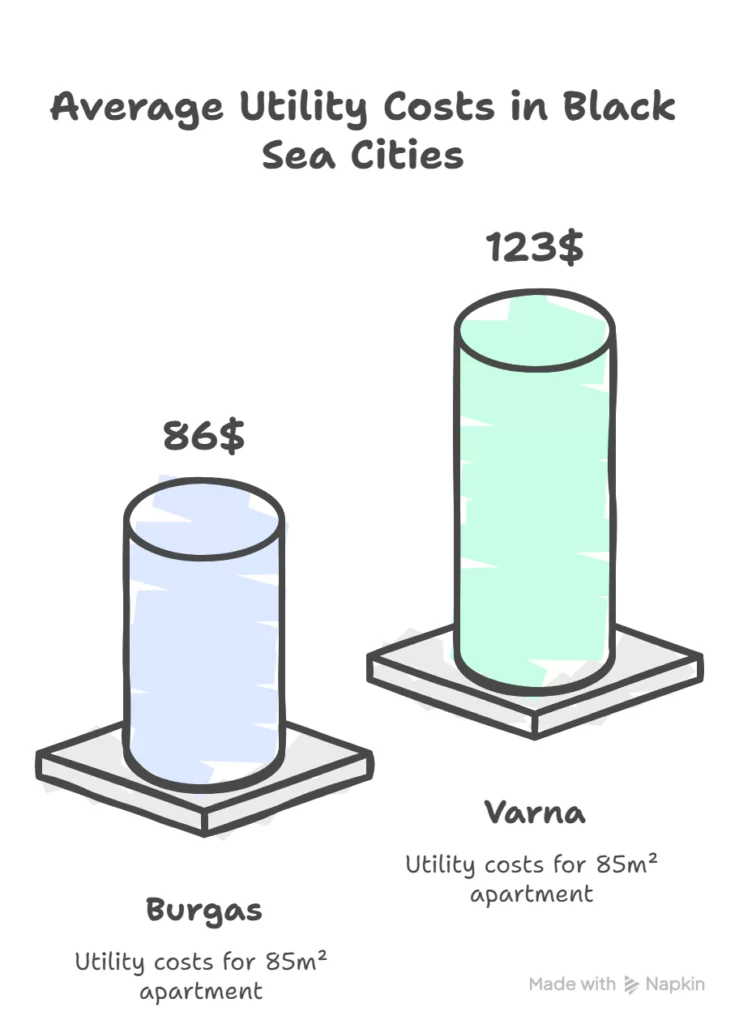
All your utilities together likely won’t exceed $150 per month. This leaves plenty of room in your budget for other expenses or savings.
Bulgaria’s climate is another major advantage, particularly along the coast. The coastal regions enjoy humid subtropical conditions. This translates to long, warm summers lasting from mid-May through late September.
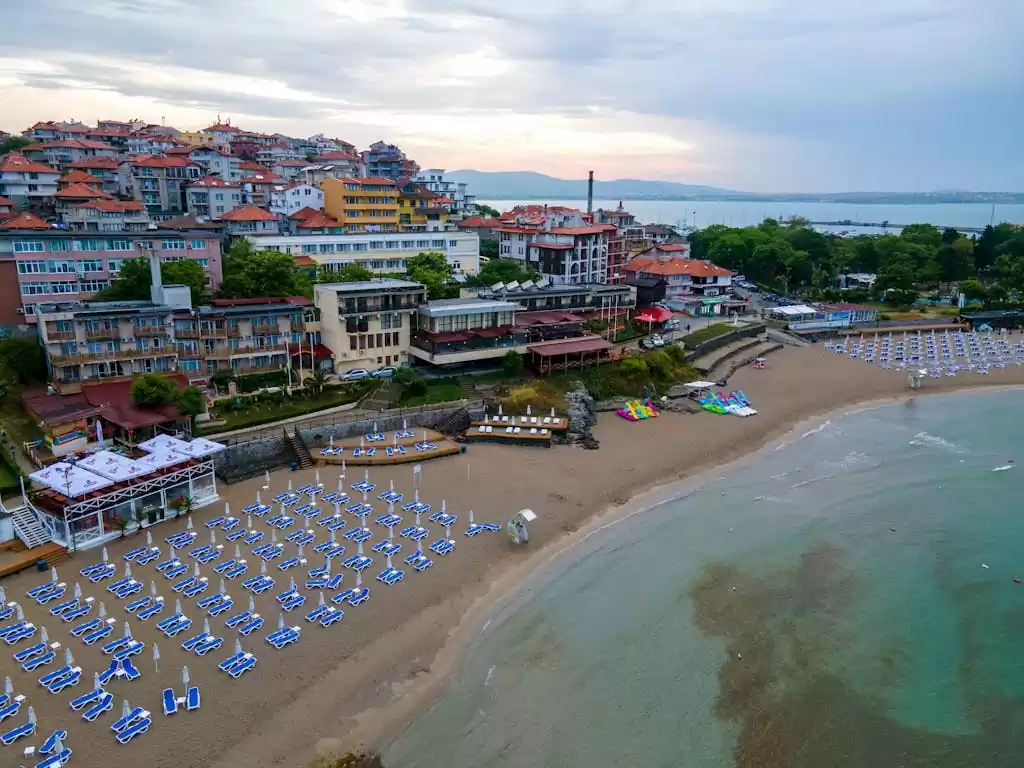
During this high season, average temperatures hover around 24 Celsius (75 Fahrenheit). This is perfect for enjoying the extensive beaches and water activities. Winters are considerably milder than those experienced inland in Bulgaria. Average winter temperatures are around 4 to 5 Celsius (39 to 41 Fahrenheit).
Although nights can occasionally dip below freezing, the Black Sea itself moderates the temperature year-round. This prevents extreme cold along the coast.
For those interested in staying long-term, Bulgaria offers a clear pathway for residency. This is primarily through its Type D visa. Non-EU citizens typically begin by obtaining this long-stay visa from a Bulgarian embassy located in their home country. Once they arrive in Bulgaria, they then apply for a temporary residence permit.
A key requirement for this process is demonstrating sufficient financial means to support yourself during your stay.

Regarding healthcare, while Bulgaria has a public healthcare system, private health insurance is highly recommended for expats. The good news is that it’s relatively affordable. Opting for private insurance generally provides faster access to specialists, English-speaking services, and more comprehensive coverage. You should plan to budget something between $50 to $150 monthly for a suitable private plan.
Another factor that makes these cities particularly appealing is their growing expatriate communities. Unlike some more remote areas where integration might be challenging, Burgas and Varna have become hotspots for digital nomads and retirees. There is a noticeable presence of British expats.
It’s not unlikely that you’ll find multiple bars showing games of the British Premier League, for example.
So, while learning Bulgarian will always enhance your experience, you likely won’t face the same language barriers you might encounter elsewhere.
Poland: Affordable Charm Near the Mountains
Our final destination is Poland.
Just like with the case of Argentina, in Poland, the idea of living on $1,000 is possible. But not in the capital.
Oh, absolutely not.

The capital city, Warsaw, nowadays is more expensive than Berlin. To put it in perspective, the price of a garage in Warsaw is the same as the price of a four-room apartment in the smaller cities.
The cost difference is as insane.
But what if I told you there is a charming mid-sized Polish city? Located close to some of the most beautiful mountains in central Europe? A city where $1,000 a month don’t just cover basics, but it could even allow you to go skiing a few times per year?
This place is Bielsko-Biała.

Bielsko-Biała sits at the foot of the beautiful Beskid Mountains. It offers a perfect mix of access to nature and modern convenience. It’s highlighted as one of my favorite places in Poland, with particular praise for the surrounding mountain towns that are lovely, really really lovely.
When I spent time there, I was amazed by how well connected all these small mountain towns are to the larger Bielsko-Biała. The whole place is so safe that it’s common to see children from these small towns taking the bus alone. They travel to Bielsko-Biała to study or even visit their friends.
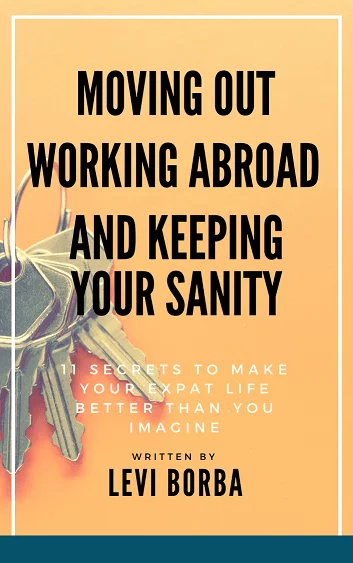
This good connectivity between Bielsko-Biała and the surrounding towns also allows you to live in a bigger city. You can do this while enjoying outdoor activities like hiking and skiing just a minute away.
Now, when renting in Poland, you need to understand an important detail that many foreigners miss. Listed rental prices often exclude the ‘czynsz’. This is an administrative fee paid to cover building maintenance, garbage collection, and usually advanced payments for centrally supplied water and heating.

This fee typically adds $75 to $190 to your base rent. The exact amount depends on apartment size. Therefore, the total housing cost equation becomes: base rent + ‘czynsz’ + separate utilities (like electricity and internet if not included).

Despite this extra fee structure, housing remains very affordable in Bielsko-Biała. You can find a nice studio or one-room apartment costing around €450 to €550 (approx. $485-$595 USD) monthly, with all fees included.
Healthcare is one of the areas where Poland shines. Private health insurance that meets the minimum €30,000 coverage requirement for visa purposes costs just $30 to $75 monthly. This provides access to private facilities and can be essential for navigating the system as a foreigner.
Bielsko-Biała’s place on the map is truly exceptional. The city serves as a transport hub. It boasts good rail and road connections throughout Poland and to neighboring countries like the Czech Republic and Slovakia.
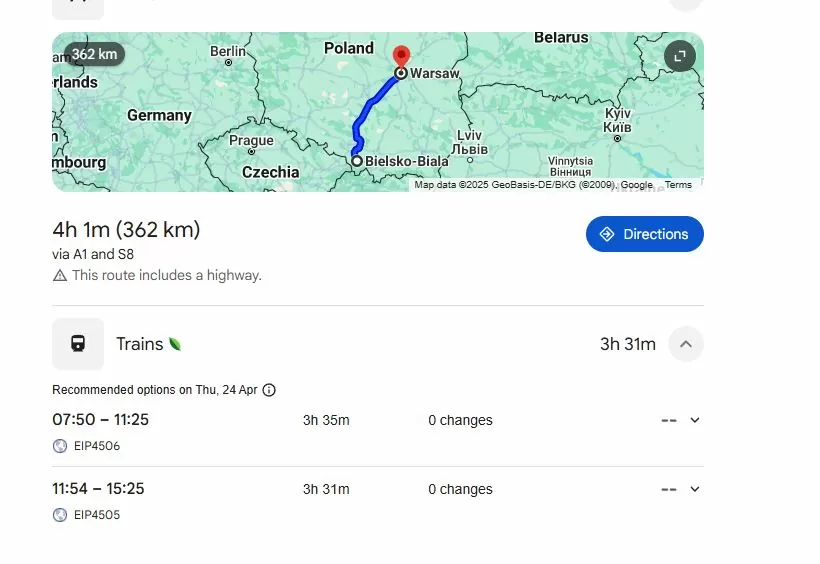
To travel inside the city, the bus network is efficient and affordable. It costs around $25 monthly.
And again, safety in Poland is a standout feature.
Poland consistently ranks as one of Europe’s safest countries. It is characterized by extremely low crime rates.

This feeling of security, combined with four distinct seasons, reliable high-speed internet (perfect for remote work), and the overall high quality of life makes Bielsko-Biała stand out. It is perhaps the most balanced option among our three countries for achieving a good life on $1,000 monthly.
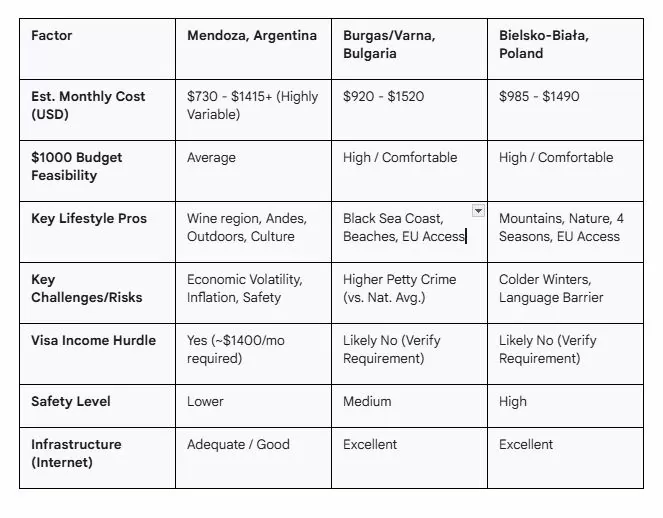
However, perfection is rare.
There are two serious issues to consider with Bielsko-Biała.
The first is the language. While you can survive just with English, be aware that your social circles will be quite restricted. Therefore, I recommend you learn Polish.
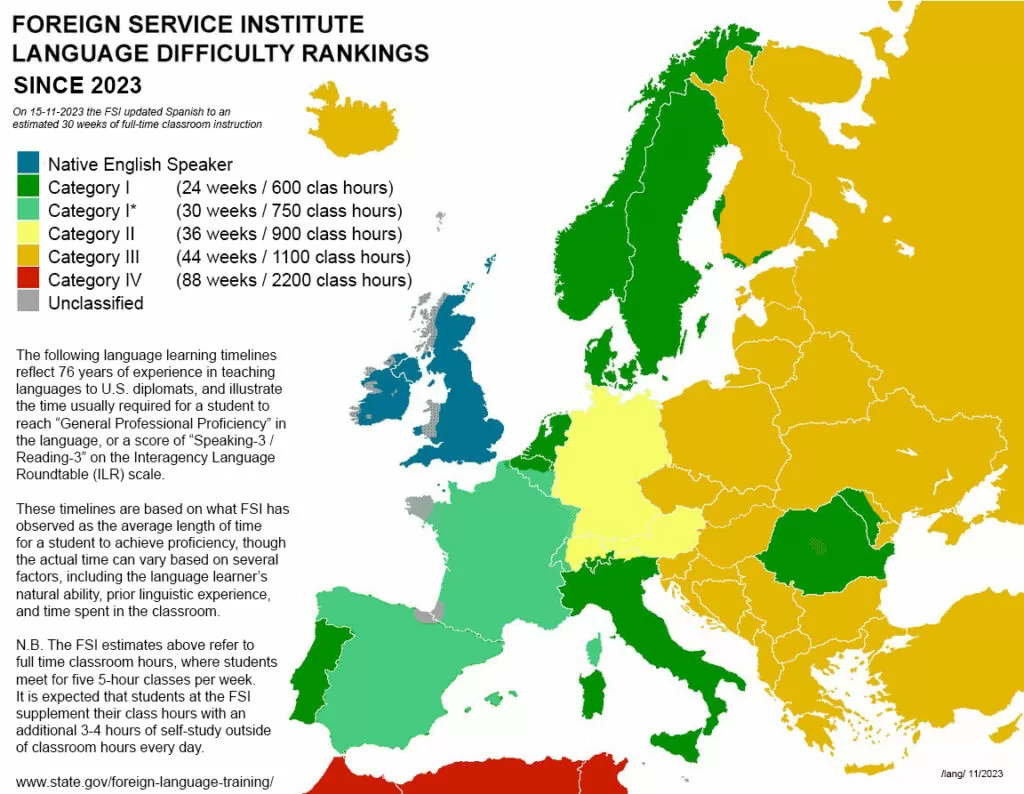
Polish is fun to learn but not easy. Sharing a personal anecdote: I took almost half a decade to learn it.
Besides the language, there is another issue.
The climate: The cold, long, dark winters of Poland are not to everyone’s taste.
Some people just prefer milder weather. They prefer a warm sandy beach nearby.
Considering Your Preferences and Next Steps
If the Polish winter sounds challenging, and if that’s your case, don’t despair. There are plenty of truly inexpensive small towns in southern Italy, Greece, and other Mediterranean destinations. These places offer warmth and coastal living.
If this is your case, it was thinking about you that I compiled my MOST IMPORTANT video ever, where I selected the best cities to move to in Europe – it is by far our greatest video, and you can watch it below.,
Some of the untold names I mention there have the potential to be your dream destination.
Levi Borba is the founder of expatriateconsultancy.com, creator of the channel The Expat, and best-selling author. You can find him on X here. Some of the links above might be affiliated links, meaning the author earns a small commission if you make a purchase.
